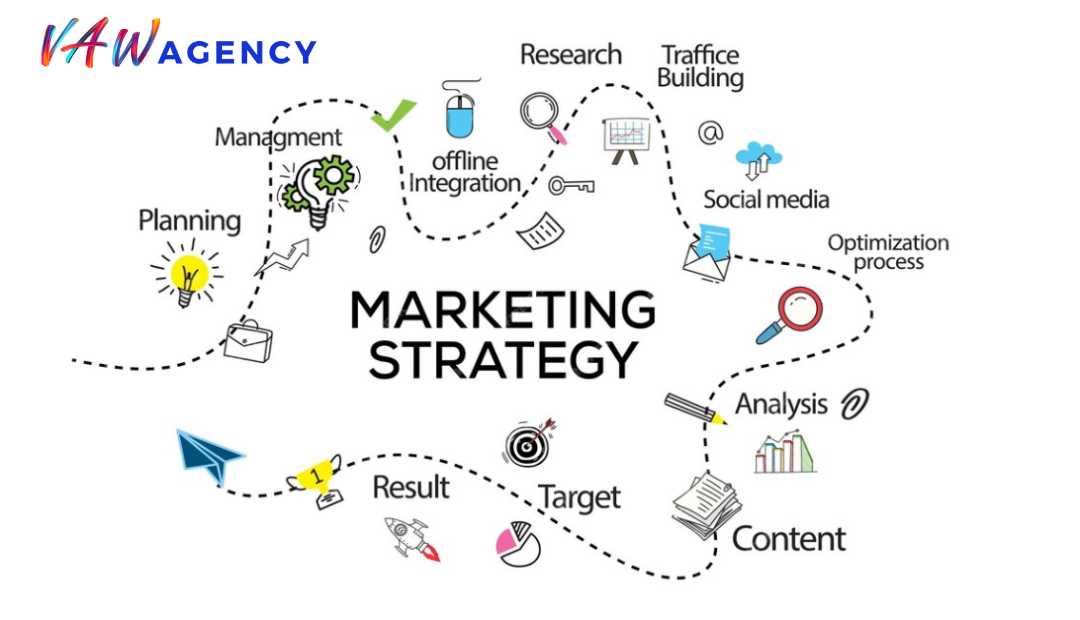
In this digital age, social media presence is critical for brands. A successful marketing strategy effort can raise user engagement, brand recognition, and ultimately business success. These are five tactics you may use to boost your social media presence through strategic marketing.
1. Define Clear Objectives
Having defined goals is crucial when implementing a social media marketing plan. These objectives should be consistent with your main business goals. Are you aiming to increase revenue, generate leads, enhance customer service, or build brand awareness? Setting clear objectives facilitates the development of a targeted and successful marketing plan.
SMART Goals
Ensure your objectives are SMART: Specific, Measurable, Achievable, Relevant, and Time-bound. For example, “Increase Instagram followers by 20% in three months” is a SMART goal.
2. Know Your Audience
Understanding your target audience is fundamental to any marketing strategy. Conduct thorough market research to identify your audience’s demographics, preferences, and behaviors.
Create Buyer Personas
Develop detailed buyer personas representing different segments of your audience. This will help tailor your content and engagement marketing strategy to meet their specific needs and interests.
3. Choose the Right Platforms
Not all social media platforms are created equal. Select platforms that align with your business and where your target audience is most active.
Platform Insights
- Facebook: Great for reaching a broad audience.
- Instagram: Ideal for visual content and younger demographics.
- LinkedIn: Best for B2B marketing strategy and professional networking.
- Twitter: Useful for real-time updates and customer service.
- TikTok: Perfect for engaging younger audiences with short, creative videos.
4. Develop a Content/Marketing Strategy
Content is the cornerstone of your social media marketing strategy. Develop a content plan that includes a mix of different types of content such as blog posts, infographics, videos, and user-generated content.
Content Calendar
Create a content calendar to schedule posts and ensure a consistent posting frequency. Consistency helps in maintaining audience engagement and visibility.
Content Quality
Focus on creating high-quality, valuable content that resonates with your audience. Use compelling visuals, strong headlines, and clear calls to action.
5. Leverage Influencer Partnerships
Influencers can help amplify your brand message and reach a broader audience. Collaborate with influencers who align with your brand values and have a genuine following.
Micro-Influencers
Consider partnering with micro-influencers. They often have higher engagement rates and more authentic connections with their followers compared to macro-influencers.
6. Utilize Paid Advertising
Organic reach on social media can be limited. Invest in paid advertising to boost your visibility and reach a larger audience.
Ad Types
- Sponsored Posts: Promote specific posts to reach a broader audience.
- Banner Ads: Display ads on social media platforms.
- Video Ads: Use engaging videos to capture attention.
- Carousel Ads: Showcase multiple images or products in a single ad.
Targeting Options
Utilize advanced targeting options available on platforms like Facebook and LinkedIn to reach your ideal audience based on demographics, interests, and behaviors.
7. Engage with Your Audience
Social media is not just about broadcasting your message; it’s also about building relationships. Engage with your audience by responding to comments, messages, and mentions.
Community Management
Monitor your social media channels regularly to engage with your audience in real-time. Show appreciation for positive feedback and address negative comments constructively.
User-Generated Content
Encourage your followers to create and share content related to your brand. This not only builds community but also provides authentic content that resonates with potential customers.
8. Analyze and Optimize
Regularly analyze your social media performance to understand what’s working and what’s not. Use analytics tools to track metrics such as engagement rates, click-through rates, and conversions.
Key Metrics
- Engagement Rate: Measures how actively your audience interacts with your content.
- Reach: The number of unique users who have seen your content.
- Conversions: The number of users who take a desired action after engaging with your content.
- Click-Through Rate (CTR): The percentage of users who click on your content to learn more.
A/B Testing
Conduct A/B testing to compare different versions of your posts, ads, or campaigns. This helps in identifying the most effective marketing strategy and optimizing your approach.
9. Stay Updated with Trends
Social media trends evolve rapidly. Stay updated with the latest trends and adapt your strategy accordingly.
Trend Analysis
Follow industry blogs, attend webinars, and participate in online communities to keep abreast of new trends and technologies in social media marketing strategy.
Experimentation
Don’t be afraid to experiment with new features and formats. Platforms like Instagram and TikTok frequently introduce new tools and features that can enhance your content strategy.
10. Collaborate with Other Brands
Collaborations with other brands can help you reach new audiences and create unique content. Choose brands that complement yours and share a similar target audience.
Co-Branding
Work on joint campaigns, co-branded content, or giveaways. This can boost visibility and engagement for both brands involved.
Cross-Promotion
Promote each other’s content on your respective social media channels. This helps in tapping into each other’s follower base and expanding your reach.
Conclusion
Having a strong marketing strategy is essential to increasing your online visibility on social media. You can greatly increase your social media impact by setting clear goals, being aware of your audience, selecting the appropriate platforms, creating a content strategy, utilizing influencer relationships, paying for advertising, interacting with your audience, evaluating and improving your performance, following trends, and working with other brands. Use these pointers to create a powerful social media presence that increases interaction and helps you meet your corporate objectives.
